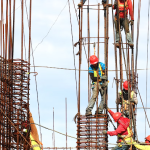In an increasingly urbanized world, designing cities that prioritize the health and wellbeing of residents is paramount. This blog explores the importance of promoting physical and mental wellbeing through urban design strategies, showcasing innovative approaches to creating healthy, vibrant, and sustainable cities.
1. Accessible Green Spaces:
Integrating green spaces into urban environments provides residents with opportunities for recreation, relaxation, and physical activity. Parks, gardens, and urban forests not only improve air quality and reduce urban heat island effects but also promote mental wellbeing by offering respite from the hustle and bustle of city life.
2. Walkable and Bikeable Streets:
Creating walkable and bikeable streetscapes encourages active transportation and reduces reliance on cars, leading to improved physical fitness and reduced carbon emissions. Designing pedestrian-friendly infrastructure, such as sidewalks, crosswalks, and bike lanes, enhances safety and accessibility for all residents.
3. Active Design Principles:
Incorporating active design principles into urban planning promotes physical activity as part of daily life. Features such as stairs, walking trails, and outdoor fitness stations encourage incidental exercise and foster a culture of health and fitness within communities.
4. Mixed-Use Development:
Encouraging mixed-use development brings essential services, amenities, and employment opportunities closer to residential areas, reducing the need for long commutes and promoting a healthier work-life balance. Access to amenities such as grocery stores, schools, and healthcare facilities supports residents’ physical and mental wellbeing.
5. Social Connection and Inclusivity
Designing inclusive public spaces that facilitate social interaction and community engagement fosters a sense of belonging and social connectedness among residents. Plazas, community centers, and gathering spaces serve as focal points for social activities and cultural events, promoting mental health and social cohesion.
6. Biophilic Design Elements
Incorporating biophilic design elements, such as natural light, indoor plants, and views of nature, into the built environment has been shown to reduce stress, enhance mood, and improve cognitive function. Integrating nature into urban spaces promotes mental wellbeing and creates restorative environments for residents.
7. Access to Healthcare and Mental Health Services
Ensuring equitable access to healthcare and mental health services is essential for promoting wellbeing in cities. Designing neighborhoods with proximity to healthcare facilities and mental health resources improves residents’ access to essential services and supports their overall health and wellness.
Conclusion
Promoting healthy cities requires a holistic approach to urban design that prioritizes the physical and mental wellbeing of residents. By incorporating green spaces, active transportation infrastructure, mixed-use development, social connection, biophilic design elements, and equitable access to healthcare, cities can create environments that support the health, happiness, and resilience of their inhabitants.


